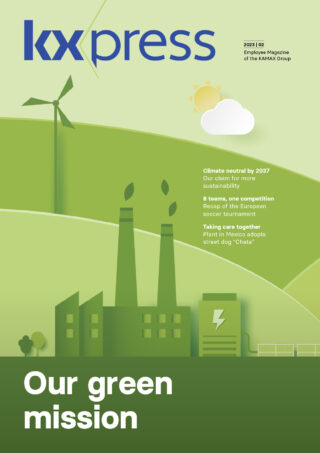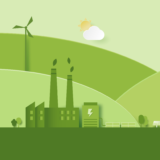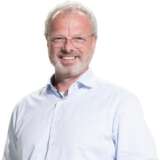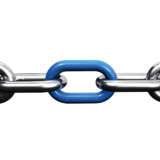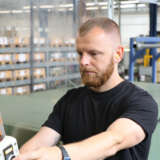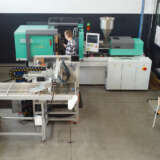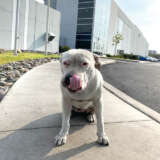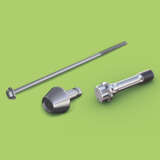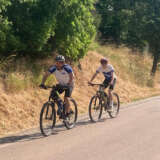Our green mission
Sustainability is everywhere – whether you are shopping, driving, reading the news or doing your job, today everything seems to revolve around sustainability. But just what is “sustainability” anyway? And what does acting sustainably mean for our company?
There is one thing that our production needs more than anything else: energy. All of our plants combined use millions of kilowatt-hours of electricity, and we consume huge volumes of gas to heat our furnaces. Energy is indispensable for working with steel and for manufacturing bolts and screws. We need it. At the same time, we can feel the effects of climate change ever more clearly all around the globe – this means that we need to reduce our CO₂ emissions and to use as little energy as possible. And, in the next few years, there will be even stricter rules mandating that companies operate more sustainably.
But what does “sustainability” really mean? The United Nations defines it like this: Sustainability means “meeting the needs of the present without compromising the ability of future generations to meet their own needs.” In other words, we have to live in a way today that allows our children to enjoy a standard of living that is at least as good as our own. And we can only consume energy to a degree that does not overheat the planet. The European Union (EU) is working to achieve these goals, and to this end it has had rules in place for European companies since 2022. From 2024 these rules will also apply to KAMAX. Among other things, we will have to declare our sustainability projects aimed at reducing CO₂ emissions.
Life Cycle Assessment
Seeing as we want to achieve successes in production in particular, we have taken an especially close look at this area. We are the first company in our industry to have conducted a life cycle assessment (LCA) for one of its products. To do this, we calculated the environmental impacts of a fastener across every step of the process: this includes not only raw materials and inbound logistics, but also production itself and outbound logistics. We also assessed the impact that the use of the product and the end of its service life have on the environment. Steel scores well here on account of its recyclability. In fact, steel can theoretically be recycled an infinite number of times. We intend to expand these analyses to encompass other fasteners as well.
Climate-neutral by 2037
At the same time, we want to satisfy the requirements of our customers: be it BMW, Mercedes, Honda or Tesla, Schaeffler or Cummins – they all want to be CO₂-neutral by 2050, and some of them are even aiming for 2040. The banks we work with share the same goal. That is why everyone expects us to also cease generating emissions by that time. There is one thing that is even more important for CEO Jörg Steins: “As an industrial enterprise, steel processor, and supplier to the automotive industry, we bear a major responsibility. We want to be a company that makes a difference in terms of sustainability, one which shows the way forward for the industry as a whole.” That is why we have set ourselves an ambitious goal: we aim to be climate-neutral by 2037.
The key is to understand that there is no alternative. Our responsibility for future generations, statutory regulations, our customers, and our investors leaves us no choice. We have only just started our journey, but we are on the right track. Therefore, we calculated our corporate carbon footprint (CCF). The purpose of the analysis is to identify where our CO₂ emissions originate. This includes not only the energy required for production and for offices, but also for transport and raw materials. Depending on their origins, emissions are assigned to different areas [see graphic]:
- Scope 1 and 2 are related to energy and to emissions generated directly by KAMAX, for example in buildings or for heat treatment.
- Scope 3 also includes upstream and downstream goods and services, such as steel we have purchased, coatings for our bolts and screws applied by third parties, and special transports to our customers.
Our carbon footprint makes it clear that gas, electricity, and steel are our biggest challenges. Nearly two-thirds of our emissions are accounted for by our purchases, with steel procurement far and away the largest item. That is why we already have teams working at all of our locations to find solutions. On the following page you will find an overview of all the things we are already doing to save energy.
Electrical power from renewable energy sources
One thing is clear – we cannot do without energy. But one possibility is to experiment with new steel alloys that make heat treatment superfluous. We can also continuously review our own processes to make them more efficient. Another way we can reduce emissions is to switch from gas furnaces to electric furnaces, because these generate considerably less CO₂ when powered using renewable energy. The catch: our current electrical systems cannot handle the volume of electricity required. There is no simple road map that is certain to bring us to our goal. Instead, we need to be searching for creative changes throughout our production operations (and beyond) that can take us in the right direction, one step at a time. The less energy that we use, the easier it will be for us to become climate-neutral – and the faster we will get there.
At the same time, we need employees that are eager to break new ground and who want to do their part to help increase sustainability. We are still at the beginning of our green mission, but this mission will be part of everything we do over the next two decades. If you have any ideas or thoughts on saving energy and sustainable solutions or would like to ask us a question regarding this topic, please send us an email at sustainability@kamax.com – we look forward to hearing from you.
Sustainability report
Sustainability means more than being environmentally aware, by the way. Social aspects are also important, as are compliance and governance, which is why we are also active in these areas. How, you ask? Find out more on pages 10/11 and in our latest sustainability report (in English). Why not take a look for yourself.
KXpress

